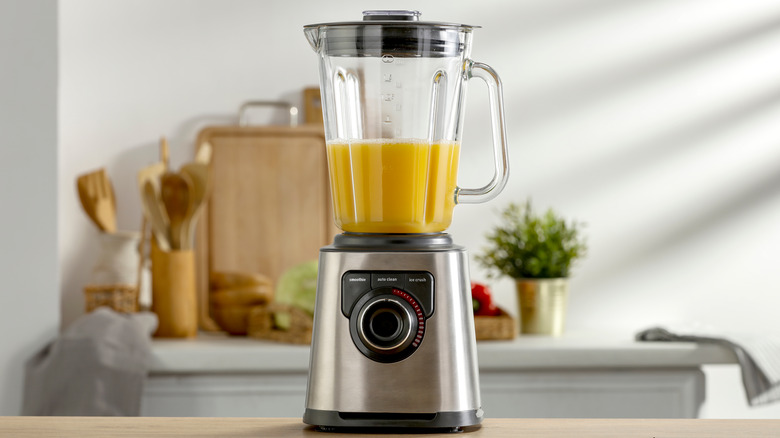The Foolproof Method To Safely Clean Your Blender
Blenders are a beloved kitchen appliance that can be used to make many recipes, from flavorful hummus and heartwarming soups to restaurant-quality smoothies and homemade ice creams. They're quick, convenient, and mess-free — that is until the time comes to clean the machine itself.
Blenders are notorious for being difficult to wash. You might think you're saving yourself time by throwing yours into the dishwasher, but that's not necessarily the case. Most blender pitchers are made from porous materials like plastic or glass. Even if they've been labeled dishwasher-safe, America's Test Kitchen says that these materials can still degrade over time. When exposed to the high heat and clanking that happens in the dishwasher, parts of your blender can warp in shape. Your blender's rubber sealing rings and blades are particularly prone to wear, causing leaks and even dulling the sharp edges in just a few cycles (via World of Blenders).
However, instead of subjecting yourself to hand washing your blender, there's another method that is much safer for your blender and your fingers.
Cleaning your blender doesn't have to be hard
When it comes to cleaning your blender by hand, their narrow pitchers and sharp blades can make it a hassle — and a dangerous one at that. Luckily, there's a much easier and safer way to clean your blender, requiring virtually no work on your part. Better yet, it will save your blender from the potential damage that putting it in the dishwasher can lead to, maintaining the shape, sharp blades, and seals so you can keep using it to make all of your favorite recipes.
To clean your blender without putting it or your fingers at risk, America's Test Kitchen recommends that you fill the pitcher halfway with warm (not hot) water. Then, simply add a drizzle of dish soap, make sure that the lid is all the way on, and start blending the mixture like you would anything else. In a matter of minutes, your blender will clean itself — however, it's good to note that this should be done while the leftover ingredients are still wet for the best results.
Afterward, give your blender a nice rinse and place it upside down on a drying rack to let it air dry. You may need to use a sponge or rag to get any stubborn bits off of the sides, but nonetheless, this method should save you, your hands, and your blender a lot of trouble.

